2022-01-19
Series "COVID 19"
Authors

Petya Koleva
is a European expert on CCI and innovation involved in EU funded regional and inter-sectoral research and capacity-building programmes. She favours the engaging, participatory forms consultation, co-creation and knowledge-sharing and experiments with a variety of online and offline formats. She leads Intercultura Consult (Bulgaria), active at local and international level.

Yulia Bardun
is cultural manager, curator and trainer, with over 15 years of professional career. Her efforts were fundamental for launching bottom-up capacity development processes in the field of culture and strengthening contemporary arts and culture sector in her native Kaliningrad region. She has first-hand experience of cross-border (both in terms of geography and disciplines) arts and culture cooperation in the EU-Russia contexts, specifically in the contemporary arts framework in the Nordic-Baltic region.

Milena Berbenkova
is an audience analysis and development specialist. She coordinated the project "Reconnect: Audiences and Cultural Content in the Digital Environment" and is now the manager of "Time Perspectives: Long-term Benefits of the Culture - Audience Relationship. She has international experience and knows the CCI sector very well.
Hybrid approaches engaging the public across genres and regions
Reconnect

This article presents and briefly analyses three recent stories from three different regional contexts in Europe that demonstrate the positive impact of innovating connections with the audience. It discusses the values of hybrid approaches to arts and culture marketing, and the benefit of resilient practices of co-creation and cross-sectoral collaboration.
Series "COVID 19"
March 2020 marked the beginning of a very challenging period in human history. On top of already exacerbated issues with global climate change and political crises, a health emergency ‘brought the world to a stop’. As many business sectors depending on travel, public events and gatherings, the art and culture sector was heavily affected.
Some large organisations were able to quickly adjust thanks to availability of funds and diverse expertise and due to the fact, they had been preparing for the digital shift already. One such example is the free access to virtual tours at Le Louvre. By contrast, small and micro-organisations and individual artists, which constitute the majority of entities in the cultural and creative industries (CCIs) in Europe, had to find their own way of managing and keeping audiences engaged in this new environment as documented in many studies, Bulgaria including.
On a personal level, people across the world became disconnected and disengaged. Even personal relationships underwent deep transformations: becoming more digital where possible or suffering a state of ‘loss’ when this was not the case. Trust was heavily tested.
In this time period presenting multiple challenges, new opportunities arose out of the need for connection and community. This article presents three cases of reconnecting through art and culture in 2020 and 2021. These demonstrate two positive aspects:
- Economic impact on the cultural sector and new value chains utilising business to client (B2C) connections and business to business (B2B) networks
- Skills and tools enhancing hybrid offers (online and on-site)
Case 1: Microincubator for reconnecting with the audience
The project "Reconnect: Audiences and Cultural Content in the Digital Environment” was developed in 2020 by Intercultura Consult and three creative cultural producers with support of the National "Culture” Fund of Bulgaria. This was the first microincubation project in Bulgaria focusing on strengthening the capacity of CCI organisations to address the challenges of remote and hybrid cultural production. The partners had realised the importance of creating new types of art and cultural experiences for audiences online. The problem was to develop offers most suitable to the needs of their core audience and even have the potential to increase their reach to new members of the public.
The project fostered a micro incubation process consisting of three key phases: research, creation, and validation. The research phase included:
- an analysis of the current digital audiences of the creative partners;
- an online survey of the general public, collecting over 700 individual responses;
- four focus groups with representatives of the general public to address the specific needs of each cultural organisation.
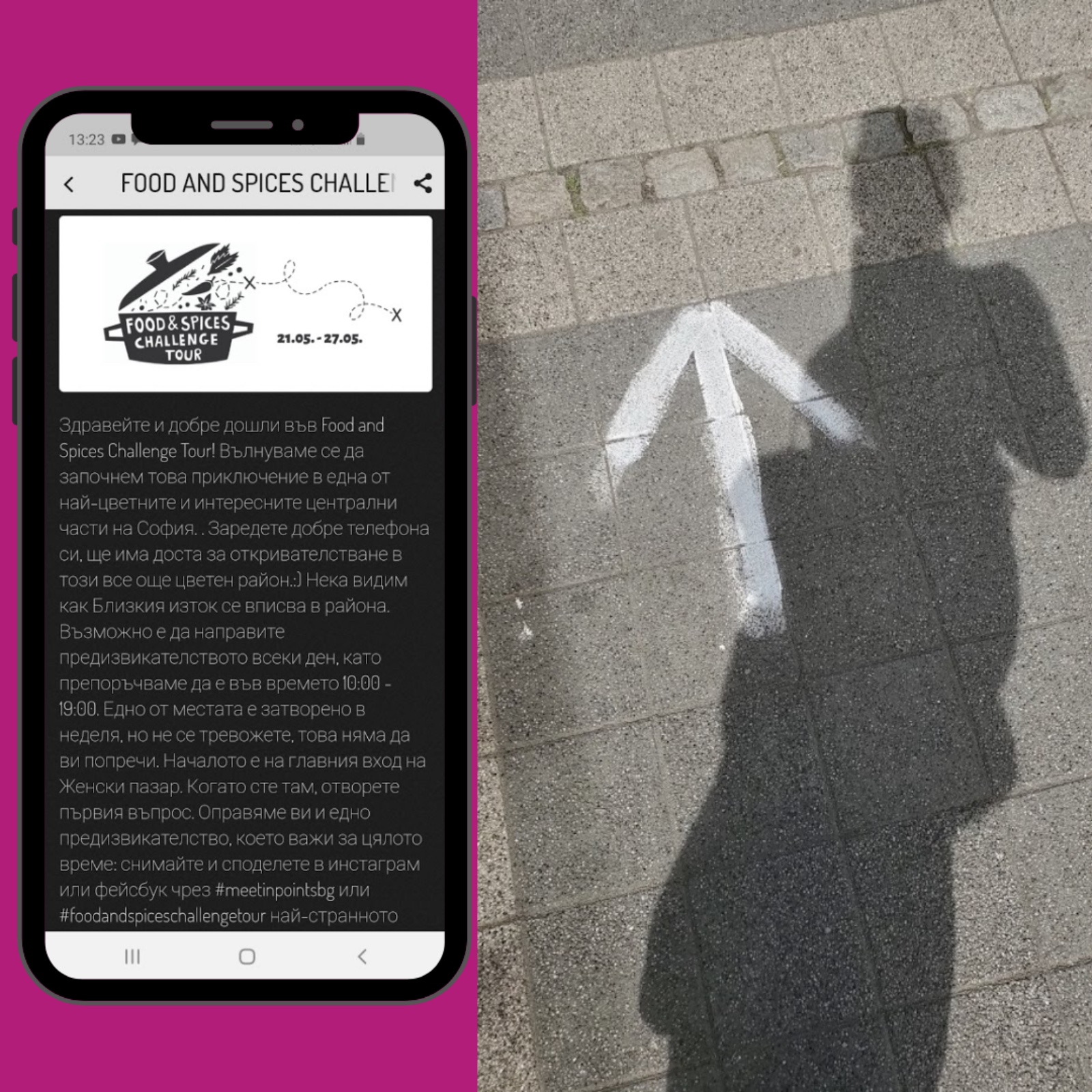

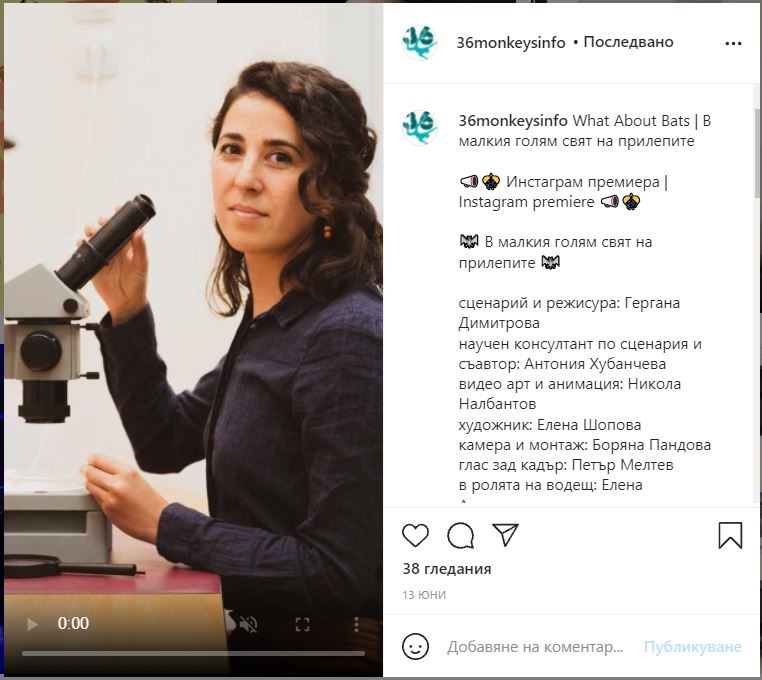
The creation phase, informed by the research phase and expert input, followed with special experimental and innovative offers. The experiments were assessed for their impact on the audience in order to validate the results.
At the end of this journey, the creative partners of the project have reported that their experimental pilot activities have indeed supported their strategy to move into the digital domain:
- They have achieved a significant increase (up to 30%) in their online audiences by applying methods of audience analysis and development with the support of experts in the project.
- The ante- and post-protype analyses contributed to improving their skills in reaching wider audiences, which ensures the sustainability of the results.
- The new connections established between the partnering organisations, as well as two public workshops have contributed to strengthening the business approach and the creative vision of 3 to 7 organisations.
- For the cultural and creative scene in Bulgaria as a whole, the key results of the research have offered new and (for the moment) unique findings regarding the preferences of the public on types and modes of digital culture they favour most. There is fresh data on preference for live versus online offer in music, theatre or museums but also very detailed insight per age and place of residence.
- The research intelligence provided the partners with insights on dispositions and choice by specific types of cultural content: children’s events, cultural tours, and contemporary performance arts.
One important finding of the study conducted is the preferred length of video when it comes to cultural offers online. The result is vital as it distinguishes culture related ‘video’ time from video consumption in general. The dominant guidance regarding online marketing stresses the limited attention span of people and a need for very short video content (1 min). The public who were surveyed have indicated that when it comes to art and culture there is clear preference for longer videos, of up to 20 (30%) or even 40 min (15%).
Another crucial finding is the fact that people younger than 25 are eager and seek more diverse sources of information on cultural offers. Their preferences for staying informed also include offline media and direct channels of communication distinct from the avalanche of social media information they consume daily. Cultural offers online are effectively to be promoted also offline.

Results on choice of platform through which different age groups engage with cultural content validated some of the expected generational divides. For instance, Instagram does attract the younger public more also when it comes to streaming cultural content online. However, the study revealed emerging new opportunities. Local platforms, such as Urbo in the case of Bulgaria, that were previously mainly used by cultural/ creative organisations as an online ticket sales point have acquired a new business role and are now offering (ticket-based) direct streaming of cultural content from artists to audiences (B to C). Since these local platforms for ‘cultural’ marketing were already reaching the right target groups their new position has been well received by the public.
Another very important finding is that the sites and social media channels of cultural providers (artists or organisations) are seen as the ‘validation’ tool regarding the quality of the offer and being consulted regularly by one-third of the surveyed public. They are also considered important channels to enrich the online cultural experience. Most age groups, starting with those 26 years-old and over, are keen to read about arts and cultural experiences, they are interested in details around the core offer. In other words, any blogs, reviews, interviews with the artists or other information about the context of the art work, the respective cultural tour, or museum item, etc., can only raise the public interest in the offer, and serve to maintain its credibility.
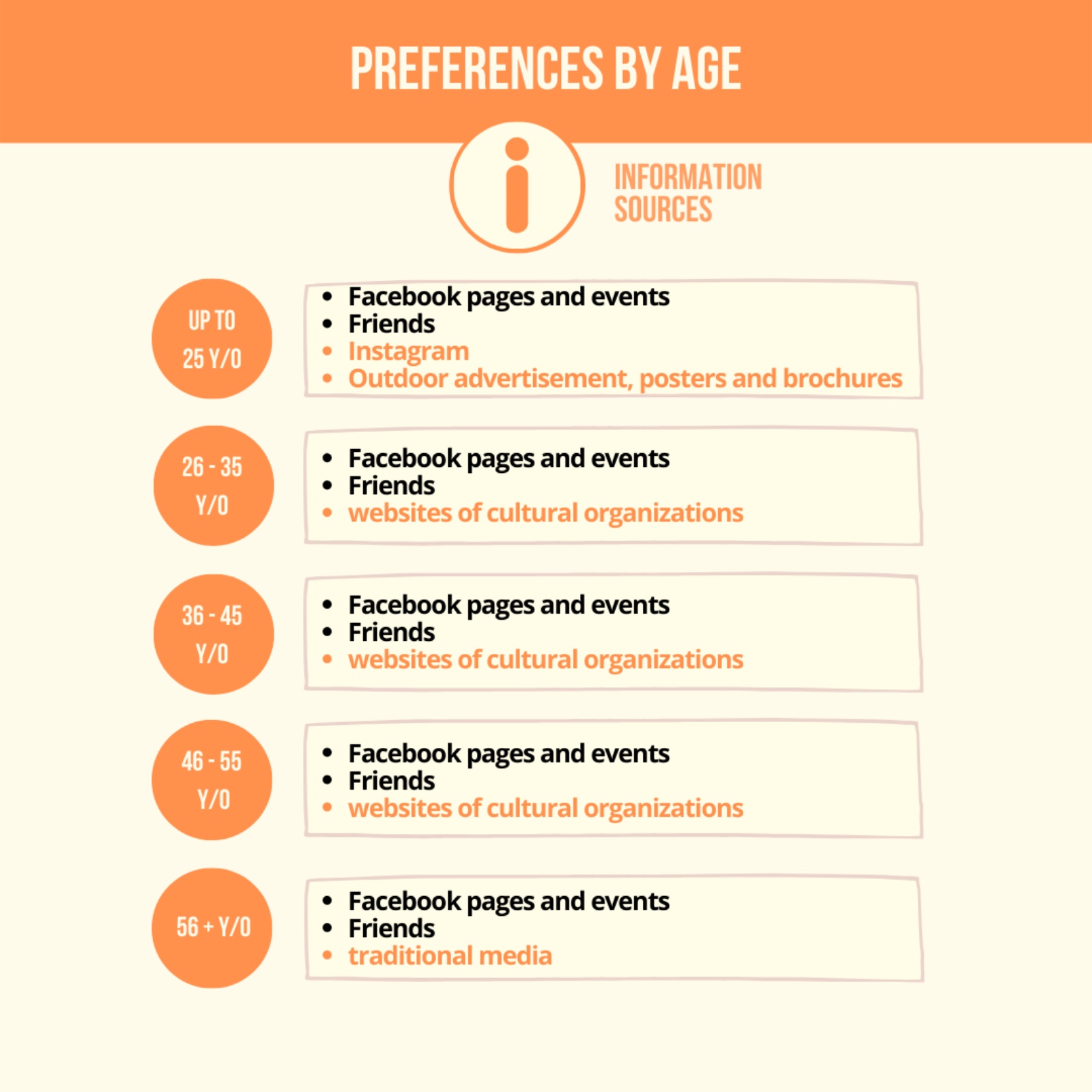
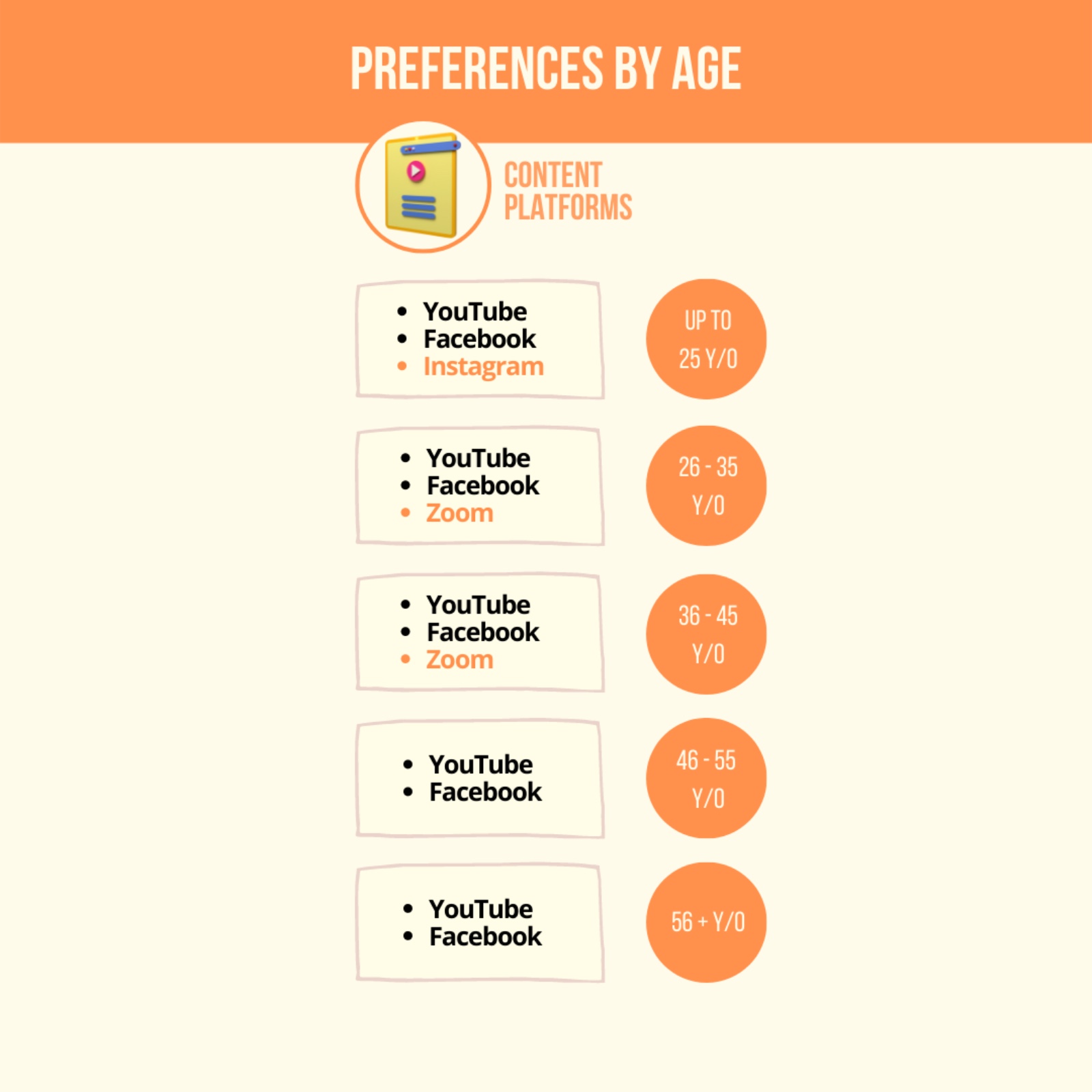
The finding that people are willing to pay for high quality online content was valuable in revealing the two main reasons:
1) a unique offer that is not available near them for direct cultural participation offline, and
2) an online cultural experience of extraordinary quality that is well communicated and backed by sound technical features.
Additionally, the study found that online cultural participation brings to the public an added value in terms of flexibility regarding the time of engagement and more freedom for the individual to test less known offers or attend experimental culture and creative work.
The microincubation process continues in a new format in 2021-2022: led by Intercultura Consult and supported by the National "Culture” Fund of Bulgaria again. The new project involves partners from around Bulgaria that seek to evaluate and expand their relationship with the audience. Organisations from Gabrovo, Cherni Osam, Elin Pelin and Kostenets will venture into new experiments that would relate them to key targets in the community in the project "Time Perspectives: Long-term Benefits of the Culture - Audience Relationship” 2021-2022.
Case 2: A green deal, cultural participation for resilience
The global pandemic has accelerated a very clear trend for people from the developed post-industrial world to seek a green deal, moving out of the big cities and seeking cleaner environments. They literally move to the greener areas nearby; they become digital nomads who move temporarily, or they ‘simply’ become green tourists seeking a rich local-to-local tourism offer. This is a chance for new services/ offers to appear mixing the ‘outdoors’ and ‘together’ dimensions of cultural practices.
Due to this expanded interest, in 2020, a small guest house in the Vishtynets Upland hosted 1600 people. Additionally, other hospitality-related sites have also reported a big inflow of visitors. However, earlier in 2020, when the hosts could not welcome visitors, one owner started delivering local farmers’ food to the big city. She launched a project to raise funds for the conservation of an abandoned house in the centre of the village of Krasnolesye in the Eastern part of the Kaliningrad region close to the borders with Poland and Lithuania. This is how Natalia Doborvolskaya’s ‘pie’ became very popular and in August 2021 the building was covered with a new roof.
In 2021, together with the cultural manager Yulia Bardun who has also invested in the local region and previously cooperated with the Vishtynets Nature and History Museum on a number of cultural projects, Natalia piloted a mixed experience tourism offer culture/ nature. The goal was to inspire the residents of 11 villages of the Nesterovsky District to learn about environmentally friendly use of local plants, about creating local products and developing a participatory- gastronomy cultural offer.


The 2021 demonstration pilot of "Tastes of Vishtynets Uplands” was based around the tourist expectations in terms of food quality, modern design, and showcasing the advantages of local products in terms of health benefits. With a standard of living lower than in other parts of the Kaliningrad region and a rather high unemployment in rural areas, the Vishtynets Upland presents opportunities for such activities. All that was needed was new knowledge, skills, equipment, partners and experimentation. The solution was to activate the potential of the region in terms of production and sale of local organic food by mixing this with cultural participation.
The value proposition for the guests is a series of eight 2-day interdisciplinary and cross-sectoral workshops involving biologists, ecologists, experts in history, culture, gastronomy and local residents. They learn and discover together natural and cultural resources; they cook and build new ties. By September, 2021, four workshops were implemented involving 450 participants, of which roughly 40 local residents (aged 10 to 80) participated on a regular basis.
The key result from the first stage of implementation is the validation of its high relevance: for the local community, for diverse partners and the professional gastronomes. The diversity of expertise was a clear asset as it brought together ecologists, biologists, farmers, gardeners, and historians / journalists plus some famous chefs.
A very valuable dimension is reported to be its ‘cultural value’, in other words: the informal collaboration on equal terms that creates a good atmosphere for connections and cooperation and has contributed to the learning process.
The project and its focus on local community development, tourism and gastronomy attracted great media attention. The largest regional media published materials about the project and its organisers, reaching 45,321 people in the Kaliningrad region promoting the idea of using local products and the development of gastronomic tourism.
Some unforeseen, additional activities and assets have emerged:
1. Additional cultural offer: Accompanying workshops for children were organized from the second workshop onwards. During each workshop for several hours, under the guidance of the staff of the Nature Park "Vishtynetsky”, the kids studied the local flora and fauna through a microscope.
2. Professional offer for the chefs: Ivan Shaldyshov, a creative chef of one of the leading restaurant chains in Kaliningrad (Britannica Projects), invited to the second workshop four fellow chefs. Free of charge, they joined the master class and created a very spectacular, engaging event. In the third workshop the rising star chef Pavel Borisenko, running a trendy gastro pub (Salt) and restaurant of seasonal food Seasons in Kaliningrad, contributed to the valuable experience. Roman Ershov, the owner of another local food restaurant Telegraph located in the seaside resort town Zelenongradsk, brought his team to almost all workshops. Finally, they suggested their interpretation of what Vishtynets food could taste like.
3. Interaction with the locals: The chefs also established personal links with several local residents, whom they met through the project. As a result, they started new experimental projects with kombucha and sauces prepared from elderberry flowers and elderberry juice. The lesson learned - star chefs are eager to learn from local residents about herbs and traditional use in this two-way knowledge sharing process.
4. Social innovation, cross-sectoral offer: Both local residents and visitors/experts have reported to being motivated for new collaborations, starting a gastronomy club, seasonal food festivals and local gastronomy master-classes.
The demonstration project "Tastes of Vishtynets Uplands” is partnering with cultural organisations such as the Vishtynets Nature and History Museum (NGO, Krasnolesye), the Kalinigrad region public Nature Park "Vishtynetsky” and with private guest houses "Shelden” and "Lesistoe life” as well as engaging local residents as volunteers. The list of partners is constantly expanding. It has received support from the international research company Corteva Agriscience in the framework of training and grant program from women-farmers TalentA in Russia.
Case 3: The politics of hybrid culture, a documentary premiere online
The pandemic COVID-19 blocked most of the opportunities for culture organisations to engage with their audiences directly, however the period has seen growth in revenues from online film and games consumption as well as music. The global recorded music market grew by 7.4% in 2020 driven by streaming, especially by paid subscription streaming revenues, which increased by 18.5% (IFPI issues Global Music Report 2021 (Accessed Sept 27, 2021)). This case is about an interdisciplinary project that addressed and engaged the audience via a political campaign, public events, performances, and a film. However, the film release could not happen as it was supposed to. This case study was developed in conversation with Elisa Calosi, project manager at IIPM.
The film "The New Gospel” by director Milo Rau was realised in Matera, one of the two 2019 European Capitals of Culture and premiered as a special event at the Venice International Film Festival 2020. The synopsis would normally tag this film for the ‘typical art film marketing’ strategies, meaning select public, sophisticated interaction and debates. ‘It narrates the powerful message of the political activist Yvan Sagnet fighting for the rights of migrants who came to Europe across the Mediterranean to be enslaved on the tomato fields in southern Italy and to live in ghettos under inhumane conditions. The director and his team return to the origins of the gospel and stage it as a passion play of an entire civilization. In Matera, in southern Italy, where the great Jesus films from Pasolini to Gibson were shot, an authentically political as well as theatrical and cinematic "New Gospel” emerges for the 21st century. A manifesto of solidarity with the poorest, a revolt for a more just, humane world.’ (Source: https://culturalfoundation.eu/stories/the-new-gospel/ (Accessed 14.09.2021).
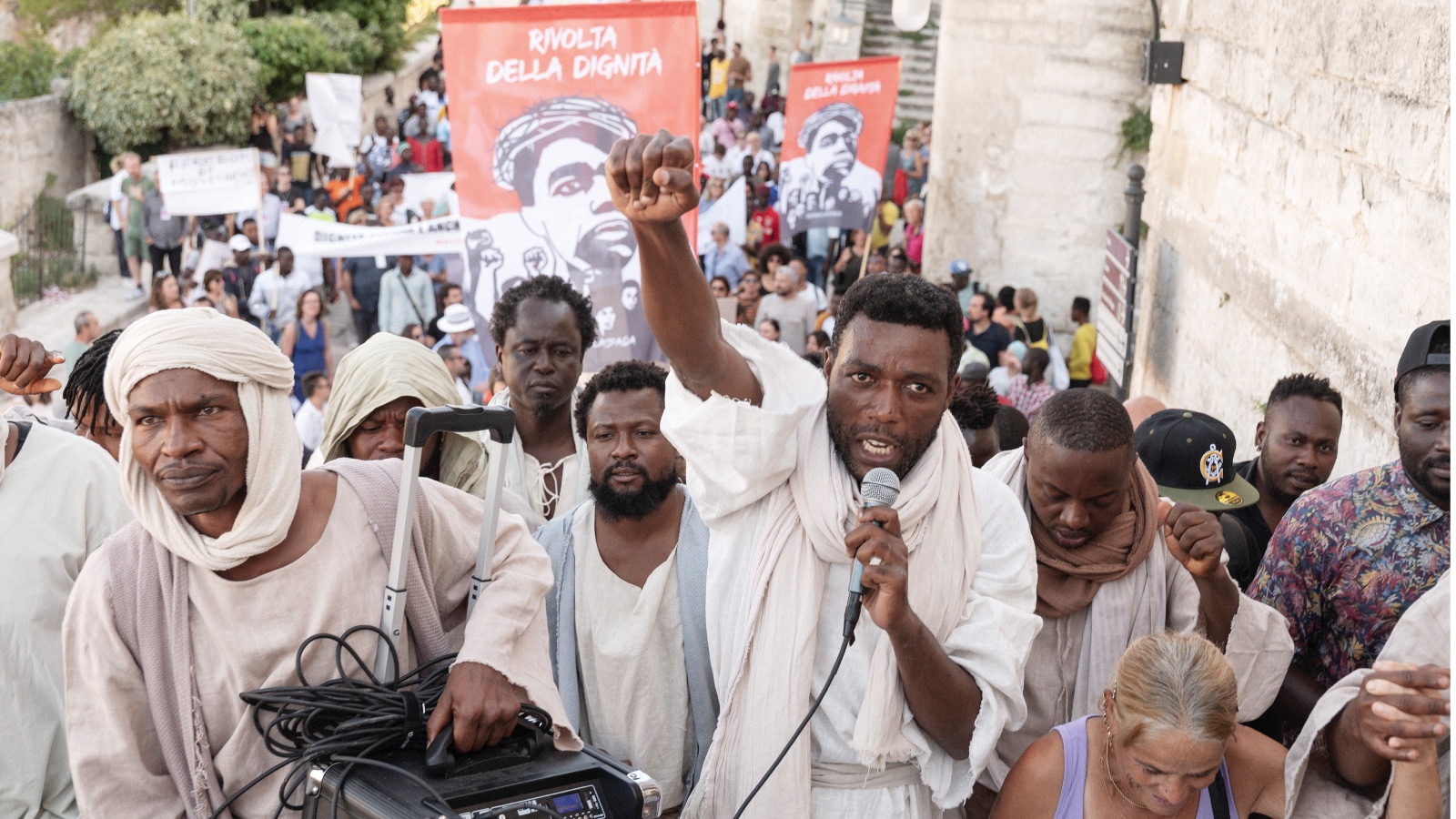
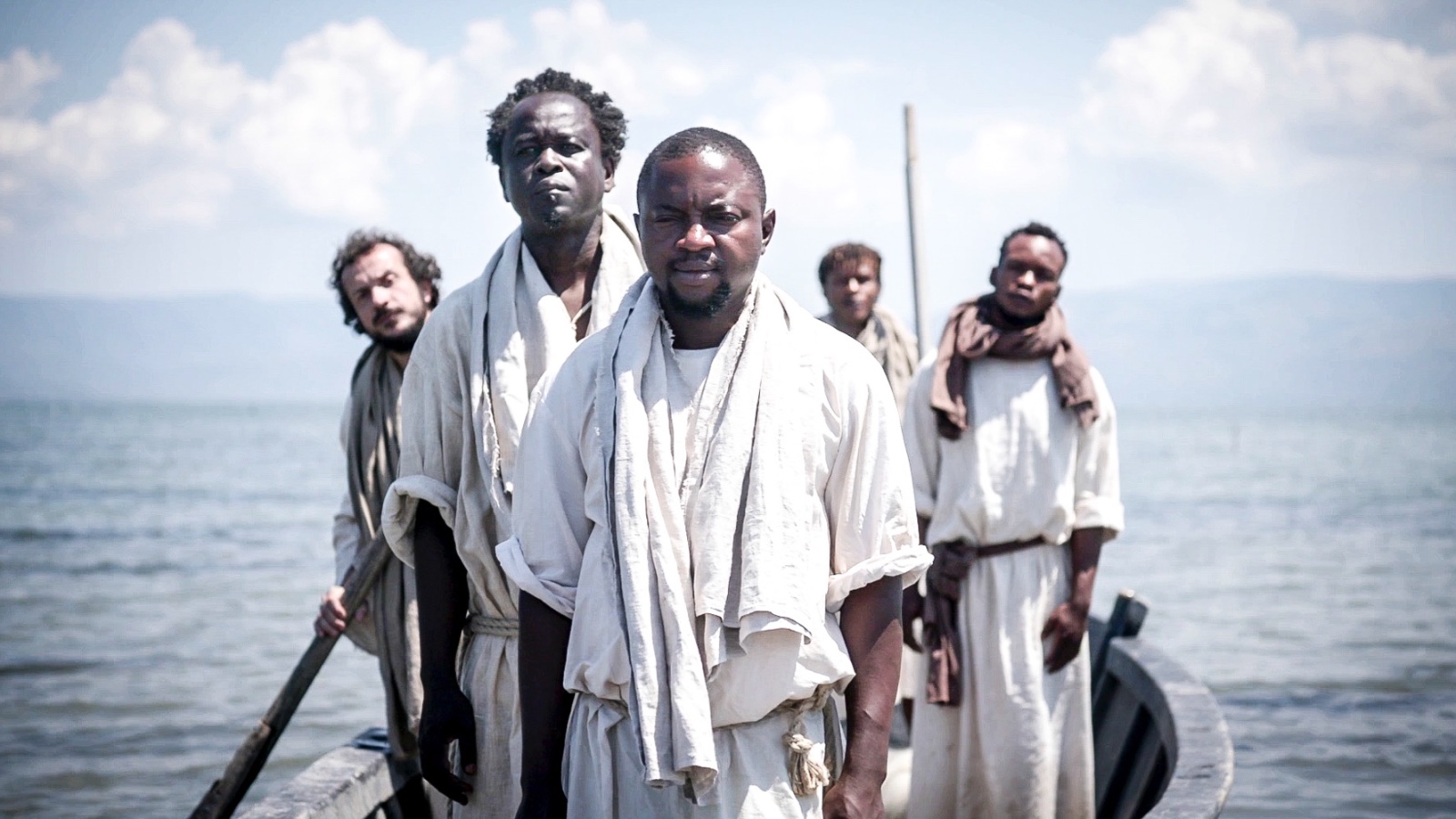
Due to the pandemic, the film release and the expectation of the director, producers and distributors had to shift from a strategy of direct encounter to digital communication and online distribution. In 2020 the film was released in Germany and Switzerland with some special events (on and offline) in other countries.
In Germany the cinema release took place only digitally. The movie was launched some weeks before Christmas on the webpage www.dasneuevangelium.de and was available until April 2021. The viewer could not only buy a ticket and watch the movie online, they could also choose which cinema in Germany will receive a part of the ticket sales. This was a good strategy to combine the need for digital offers due to the pandemic with support the local cinemas that were also closed. During the digital release over 10.000 tickets were sold in Germany.
In Switzerland, the producer and distributor decided to postpone the cinema release and to wait for the re-opening of cinema houses, which at some point was no longer imaginable. On April 1st both the German and French cantons started "The new Gospel” release in e-cinema. As of April 19th, with the re-opening of the cinemas, the Swiss release became a hybrid format. Together the digital and analogue release sold over 11.000 tickets, with an insignificant difference between the audiences reached. It is possible that the high number of physical audiences viewing the film in the cinema theatre was a result of the considerable online hype already garnered. Reviews from the critics have been positive of the film.
Synergies were created here and a communication strategy developed that could reach as many multiplicators as possible: media, cultural and political organisations, but also religious, church and migrants associations, those working with refugees, those with focus to eco and fair consumption. This is another important factor that contributed to the success of the cultural offer online.
In conclusion, what next?
In 2021-2022, Intercultura Consult continues work in a new microincubation process that involves different types of cultural organisations again involving them in the design of a co-creation process. The demonstration project "Tastes of Vishtynets Uplands” continues in the coming months and is expected to lead to spin-off initiatives as discussed above. Producers of documentaries are likely to stay tuned for the important ways in which hybrid distribution can deliver a complex cultural message.
An element essential to all the presented examples is that they are possible in partnership and that new and constantly updated competences and skills need to be mixed. The authors would like to recommend all CCI organisations to reach out and build closer relations to organisations that support the local cultural ecosystem. Some of those organisations maybe of the CCI scene itself but some may come from different sectors. Earlier this year, another article reflected on the benefits of CCI cross-sectoral collaboration and innovation projects and initiatives within and outside the Northern Dimension region. There is a clear need to pursue such forms or collaboration and it is important that there is public policy channelling support to empower them.
This article first appeared in Arts Management Quarterly No. 137: "Arts Management and Health".
References
- Bardun, Y. et al., (2021). Creative and cultural industries cross-innovations. Collaboration for sustainable growth in the Northern Dimension countries, ARTS MANAGEMENT QUARTERLY No 136: Serving Communities, March 2021.
- Berbenkova M. and Koleva P., (2020). Reconnect: the cultural sector in a state of emergency, https://inter-cultura.eu/reconnect-the-cultural-sector-in-a-state-of-emergency (Accessed Sept 27, 2021).
- Berbenkova M. and Koleva P., (2021). Reconnect: First Insights from the Research on the Interest towards Cultural Content in the Digital Environment, Intercultura Consult 2021, https://inter-cultura.eu/docs/Reconnect%20First%20Research%20Insights%20EN.pdf (Accessed Sept 27, 2021).
- IFPI issues Global Music Report 2021. https://www.ifpi.org/ifpi-issues-annual-global-music-report-2021/ (Accessed Sept 27, 2021).
There are no comments for this content yet.
similar content

